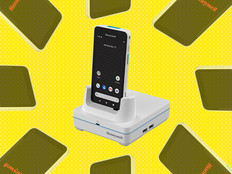3 Ways Internet of Things Technologies Aid Senior Care
Few prefer a sterile hospital room to the comfort of home, but keeping some patients, particularly seniors, out of hospitals can be a challenge. As people age, they face more chronic health conditions, such as diabetes, heart disease, arthritis, high blood pressure and cardiovascular disorders.
Along with a growing list of ailments comes an increasing number of medications, doctors, instructions and medical appointments to manage. The daily regimen can be overwhelming for anyone. Add to this the emotional toll of chronic health issues, and it’s easy to see how health conditions can deteriorate from lack of proactive management, causing some patients to keep rotating from hospital bed to hospital bed.
That’s where Internet of Things (IoT) technology can have a significant impact. Through a combination of wearable devices, cloud-based platforms and analytic tools, seniors no longer are solely confined within a hospital’s walls. Here’s a look at the role of each of those components in keeping seniors healthy.
Wearables
When a patient lies in a hospital bed, he or she is often hooked up to machines that monitor heart rate, breathing, oxygen saturation, blood pressure and temperature. If any of these metrics is off, the monitors alert the medical team immediately. This capability has historically been an advantage of hospitals, but now healthcare providers can access these metrics for off-site patients.
By equipping patients with devices when they’re released from the hospital, doctors and nurses can keep track of their health as if they were down the hall. Wearable devices containing IoT-enabled biometric sensors are typically available as a band or a watch but can also take the form of jewelry, clothing, shoes, glasses or other accessories. Other IoT-enabled sensors can be embedded in devices throughout a home — such as on a refrigerator, a toilet or a pill bottle — to track everything from fitness levels to diet to sleep. The devices typically connect with the Internet through a smartphone or a gateway device.
Such tools also can detect if seniors stay in bed longer than usual, if they’re taking their medications as directed, if they’re skipping meals or if they’re stretching and getting a sufficient level of exercise.
Connecting Data to Providers
A robust, secure connection is critical to the effectiveness of wearable devices. This can be achieved through an application on the user’s smartphone via Bluetooth or through a secure data IoT gateway (which can be installed in homes, clinics and senior living communities) that sends data to a secure analytics platform to be aggregated and analyzed. Once analyzed, the platform makes the dashboard available to the individual and health providers via a secure login on a device such as a tablet or computer.
Intel’s IoT Gateway, for instance, consists of hardware and software that enable data to flow between devices and the cloud. It employs a choice of Intel processors, the Wind River Intelligent Device Platform XT development environment and McAfee Embedded Control security technologies to automate the secure transfer of data to and from the edge and the cloud.
Cloud Analytics
While wearable devices have become valuable tools to collect data never before available to healthcare providers, cloud analytics tools make that data useful. Big Cloud Analytics’ COVALENCE Health Analytics Platform provides an array of benefits, including robust trending and scores, scalability, cost-effectiveness and mobility.
The volume of high-quality data available from wearables is nearly limitless, but healthcare providers’ time is not. In order for doctors and nurses to make optimal use of the information collected from devices, it must be aggregated, analyzed and presented in dashboards along with trigger emails for key issues identified in the data.
Dive Deeper
Wondering how Internet of Things technologies improve care for older adults? Download the white paper “Helping Seniors Stay Healthy” to learn more about
- How wearables are deployed
- The role of cloud analytics tools in making new data useful
- Potential benefits to wearers
You'll also score access to HealthTech's entire library of free, downloadable white papers by signing up just once.







